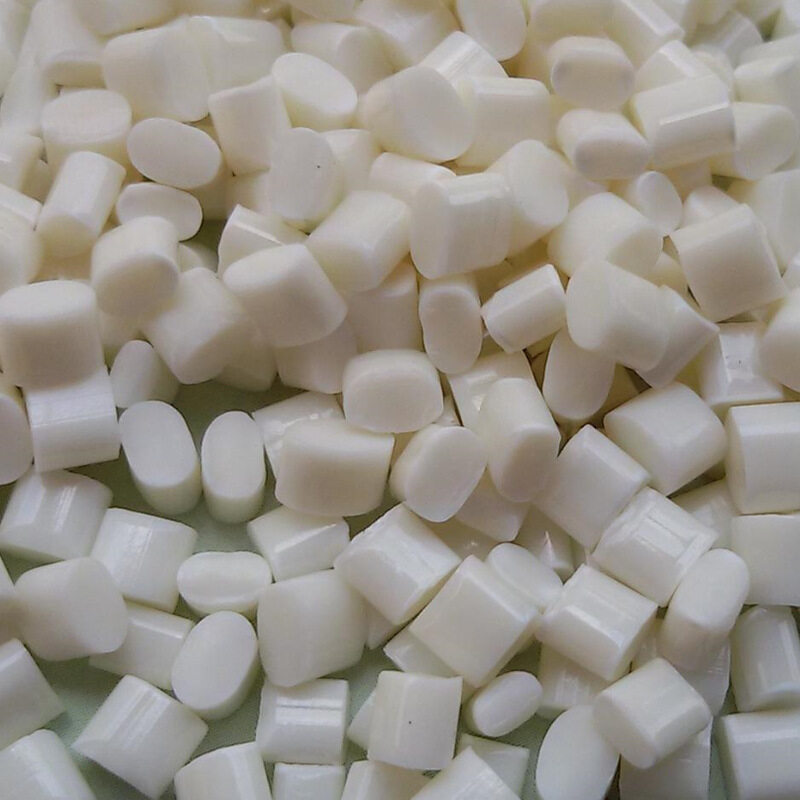Email format error
Email cannot be empty
Email already exists
6-20 characters(letters plus numbers only)
The password is inconsistent
Email format error
Email cannot be empty
Email does not exist
6-20 characters(letters plus numbers only)
The password is inconsistent

Offer Technical Support and Customized Solutions
The company is committed to creating new and improved plastic materials to meet the evolving demands of the market.

PBT Plastic Granules: The Key to Precision Molding and Manufacturing Success
Introduction:
Polybutylene terephthalate (PBT) is a versatile engineering plastic that has gained popularity in various industries due to its exceptional mechanical, electrical, and thermal properties. As a modified plastic manufacturer, TOPONEW engineering takes pride in our expertise in developing and supplying high-quality PBT materials that are customized to meet the specific needs of our clients. With a commitment to innovation and a strong focus on customer satisfaction, we have firmly established ourselves as a top player in the PBT market.
The Processing Characteristics of PBT Plastic Granules
PBT is a versatile material commonly used in injection molding processes for its excellent properties. When processing PBT, there are some important considerations to ensure optimal results:
PBT has minimal moisture absorption, but it is sensitive to moisture at high temperatures. During processing, it is recommended to dry PBT to prevent molecular degradation, darkening of color, and surface blemishes.
PBT melt has excellent flowability, making it suitable for molding thin-walled and complex-shaped products. However, special attention should be given to mold overflow and nozzle drooling.
PBT has a distinct melting point. When the temperature rises above the melting point, its flowability dramatically increases, requiring careful attention.
The processing range of PBT is relatively narrow. It rapidly crystallizes during cooling due to its good flowability, making it particularly suitable for rapid injection molding.
PBT exhibits a noticeable shrinkage rate and a higher variation in shrinkage among different directions compared to other plastics.
PBT is sensitive to notches and sharp corners, which can cause stress concentration and reduced load-bearing capacity. Designers should pay attention to these areas and utilize rounded transitions for all corners, especially internal ones.
Pure PBT can elongate up to 200%, allowing for easy demolding of products with small undercuts. However, when filled with glass fiber or other fillers, the elongation rate decreases, making it impractical for demolding products with undercuts.
It is preferable to have short and thick runners in PBT molds, with circular runners providing the best results. Both modified and unmodified PBT can utilize regular runners, but glass fiber reinforced PBT requires hot runner systems for optimum performance.
Gate design, such as point gates and submerged gates, can reduce the apparent viscosity of PBT melt, facilitating the molding process. It is common to use larger gate diameters for effective gate operations.
Ideally, gates should be positioned directly opposite to the mold cavity or core to avoid jetting and minimize melt backflow during mold cavity filling. Otherwise, surface defects may occur, leading to performance degradation.
Main Injection Molding Conditions for PBT
Barrel TemperatureChoosing the appropriate barrel temperature is crucial for successful PBT molding. Temperature that is too low can result in inadequate plasticization and lead to product shortages, sinking, uneven shrinkage, and loss of gloss. Conversely, excessive temperature can cause severe nozzle drooling, overflow, color darkening, and even material degradation. Typically, the barrel temperature is controlled within the range of 240-280°C, while glass fiber reinforced PBT is controlled within 230-260°C. The nozzle temperature should be set 5-10°C lower than the front barrel temperature.
Mold TemperatureMold temperature directly affects the dimensional stability, warping deformation, molding cycle, and crystallinity of the product. PBT easily crystallizes, even at room temperature, meaning that high mold temperatures are unnecessary. Generally, the mold temperature is set within the range of 40-60°C for PBT, and slightly higher for glass fiber reinforced PBT, typically between 60-80°C.
Injection PressureDue to its low melt viscosity and good flowability, PBT can be processed with moderate injection pressures, generally ranging from 60-90MPa. Glass fiber reinforced PBT requires higher pressures, typically between 80-100MPa. Injection pressure usually increases with increasing wall thickness of the plastic part but should not exceed 100MPa to avoid difficulties in demolding.
Conclusion:
In conclusion, TOPONEW is dedicated to providing exceptional modified PBT materials that cater to the unique requirements of our clients. Leveraging our advanced manufacturing facilities and expert team, we can tailor PBT formulations to enhance its mechanical strength, chemical resistance, and thermal stability, among other properties. Our commitment to quality and customer satisfaction sets us apart, ensuring that our modified PBT materials consistently deliver the highest performance standards. As industries continue to demand innovative plastics, TOPONEW remains steadfast in our pursuit of excellence, pushing boundaries, and setting new benchmarks in the world of PBT engineering plastics.

